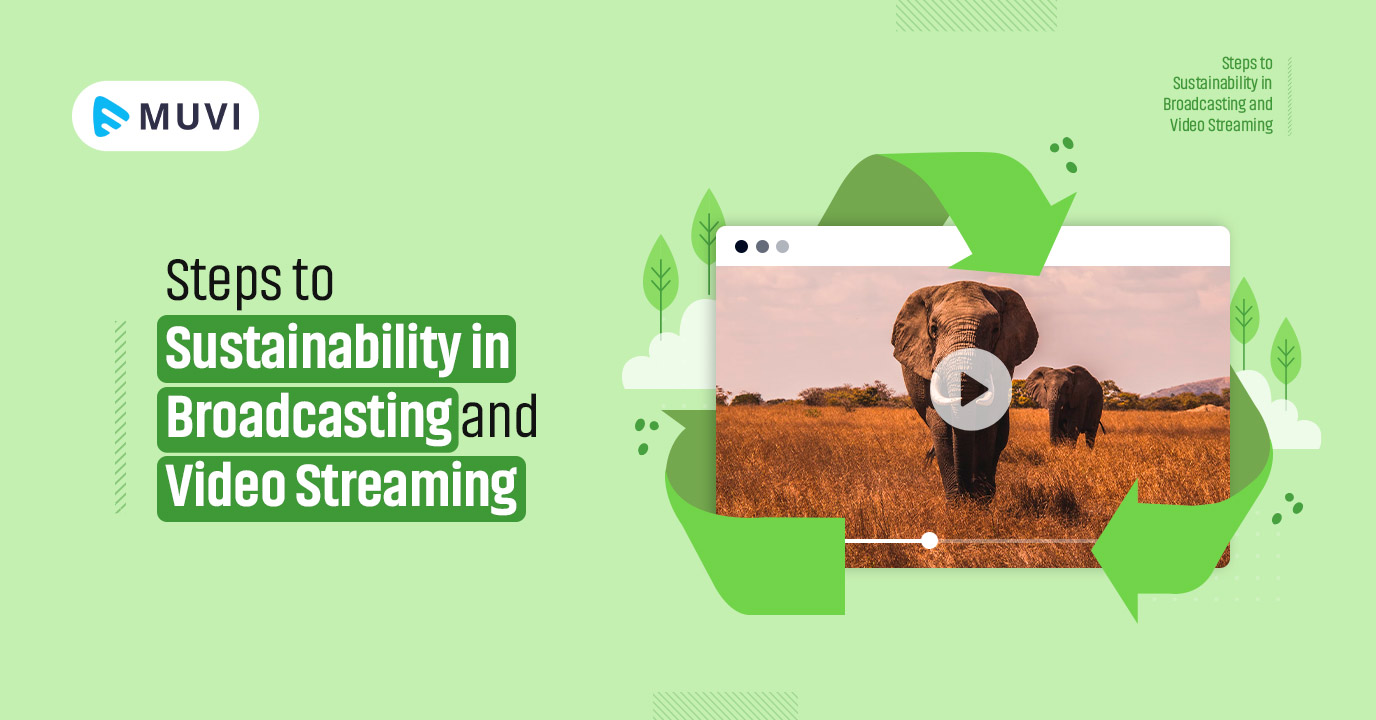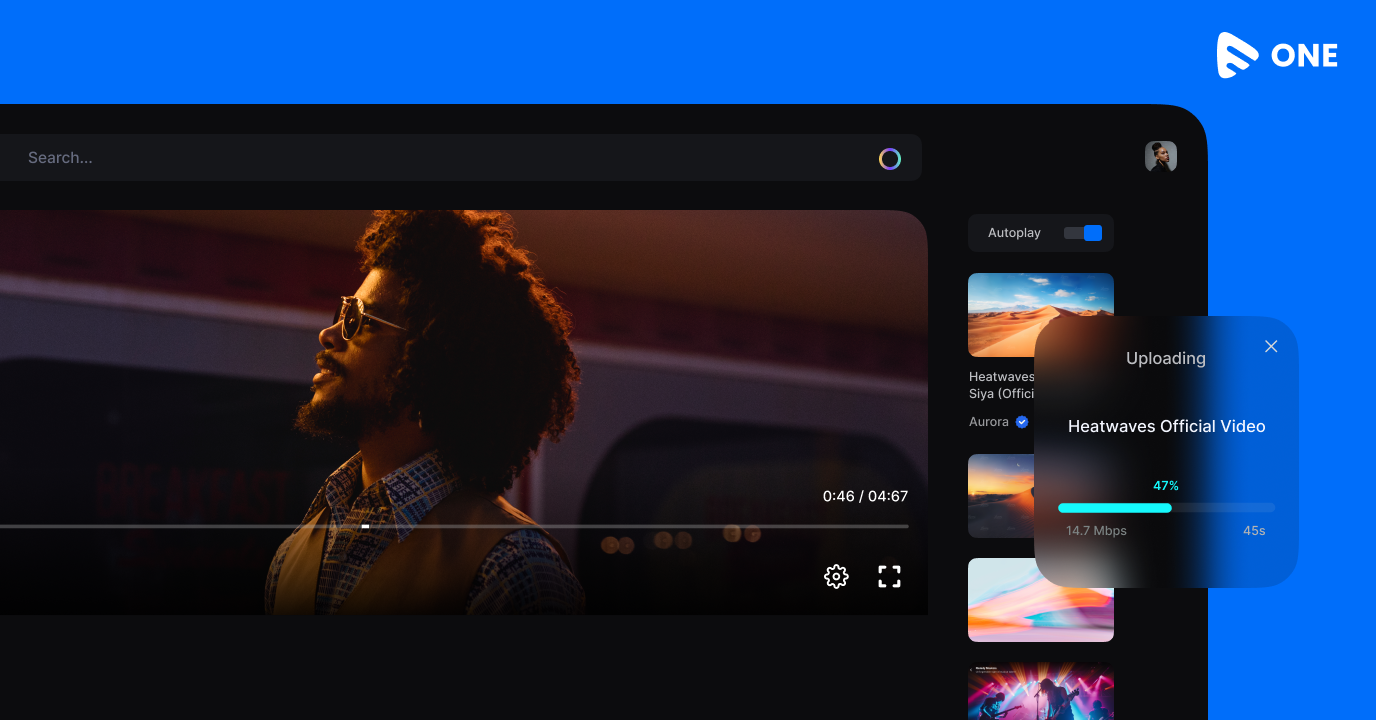Across the business world, companies have looked at different methods of approaching their sustainability strategy, as well as improving energy efficiency. For larger firms, environmental sustainability has become a key pillar of their social corporate responsibility plan. So where does this fit in for the television, film, broadcast, and distribution industries? In this blog, we will analyze the current state of the video streaming industry and the steps to sustainability in broadcasting.
The Current State of Video Streaming
The video entertainment industry – from feature films to console gaming – carbon footprint for this industry continues to see an uptick. This is a result of the digital revolution that’s bringing technology and screens to the masses, directly resulting in an increase in time consumers are spending on their devices. Of course the sudden boom of the trend can be said to have been catalyzed by the COVID-19 pandemic.
By 2022, according to CISCO’s Visual Networking Index, video viewing will account for 82% of all internet traffic, with internet traffic accounting for well over 1% of global emissions.
Netflix announced its annual carbon footprint for 2020 in an ESG report, and the results are quite surprising. The streaming service provider generated roughly 1.1 million metric tons of CO2 last year, equivalent to the yearly emissions from approximately 240,000 passenger cars. Shocking, isn’t it? Also, there are no strict government regulations or standards to monitor the carbon footprint and energy output across the video entertainment industry.
However, today’s informed customers are more aware of the carbon impact of the organizations they buy from, and are now more likely to turn to a greener alternative. While awareness is growing, the broadcast and streaming sector has so far made little progress in terms of sustainability targets other than the general CO2 emission reduction objectives delivered at the governmental level.
Steps Toward Sustainability in the Broadcasting and Video Streaming Industry
The concept of sustainability is just beginning to be embraced by the video industry and large broadcasters and producers, like the BBC and the National Center for Cinema and the Moving Image. They have already considered a greener approach in addressing their sustainability practices, driven by corporate social responsibility.
Usage of New Codecs
Steps towards sustainability in broadcasting and video streaming industries are slowly starting to become a core element of organizational strategies. For this, streaming service providers should focus mainly on the carbon footprint associated with the video streaming process. Steps towards optimization should be considered to reduce the power consumption of hardware and software by implementing best practices.
How can this be achieved?
A greener long-term alternative to sustainable streaming mainly comprises implementation of two processes. First, the introduction of new codecs; second, encoders using standards-compliant algorithms.
A satisfying video streaming experience relies on striking a balance between image resolution, latency, and scalability. To achieve this goal along with a reduction in bandwidth, without sacrificing latency, scalability, or quality either an improved transport protocol and/or more efficient video compression standards through usage of next generation codecs must be used.
Implementation of both works together in reducing bitrate and bandwidth consumption in the video streaming process leading to an overall lower carbon footprint as less storage, streaming capability and caching is required. This strategy does, however, have immediate consequences.
Muvi is a customizable video streaming platform that can be integrated with next generation codecs like Versatile Video Coding (VVC), Essential Video Coding and Low Complexity Enhancement Video Coding (LCEVC) that helps in an overall reduction in carbon footprint as less storage, streaming capability and caching is required.
For our exclusive webinar on video codecs with Jan Ozer, watch Video Codecs in 2021 and Beyond
CDN Caching and Just-in-Time Packaging
CDN caching can also be attributed towards sustainability in the video broadcasting and video streaming industries. Video optimization processes make video delivery more efficient and less wasteful in the use of resources. A reduction in bitrate via improved compression techniques, for example, enables more channels on a single server, leading to reduced bandwidth consumption throughout the CDN. By also optimizing CDN caching, a greener service is facilitated.
An elastic CDN helps in bringing content to the edge, away from the central system, ensuring viewers get quick access to the content they most wish to see. While beneficial for viewers, this also means that the content will no longer need to be delivered from the central location. This helps enable more sustainable practices as it reduces the necessary bandwidth and costs.
Apart from CDN caching, just-in-time packagers also contribute to reducing bandwidth requirements, thereby increasing sustainability. Broadcasters and streaming service providers can deliver content with just-in-time processing, ensuring content is processed only when it is needed by viewers. By producing content on-demand, the need for hardware resources and CPU storage is reduced, which ultimately leads to lower power consumption and increased sustainability.
Muvi Partners with Amazon AWS Services. AWS enables customers to build sustainability solutions ranging from carbon tracking to energy conservation to waste reduction, using AWS services to ingest, analyze, and manage sustainability data.
Sustainability through User Interface (UI)
Sustainable streaming can also be practiced through User interface (UI) design providing an opportunity for audiences to make more sustainable decisions.
How can this be achieved?
Video streaming platforms can display option boxes by asking if the user wants to reduce their video resolution, and also inform how they can reduce their energy consumption by notifying them of options. Offering a choice between UHD and “Eco” video streaming mode might come in handy, but there’s an open question on whether customers will pay more for a “greener” streaming alternative.
UI changes can be used to counteract the fragmentation of viewership in a shared household, by encouraging more shared viewing experiences, avoiding tailored or personalized viewing on separate devices.
Also Read: Essential UX/UI Features for OTT Apps
Government Policies
The European Green Deal (EGD) – a set of policies driven by the European Commission, has been implemented in 2021 – setting ambitious targets of reaching net-zero global warming emissions by 2050. In this deal, the video entertainment industry has been indirectly addressed through multiple goals and targets.
For example, one of the policies looks to address the high environmental footprint associated with data centers – key to the video entertainment space – stating that the ICT sector must undergo its own green transformation. With an aim to reuse wasted energy, the European Commission states that data centers should be climate neutral by 2030.
Apart from the EGD, Horizon 2020 – a €77 billion research and innovation program focused on cleantech and sustainability – has looked at addressing data centres’ energy consumption.
Wrapping Up,
Achieving truly sustainable services is a work in progress for many organizations, but broadcasters and video service providers are slowly taking significant steps towards harnessing an end-to-end greener streaming solution that enables a reduction in storage, bandwidth and hardware requirements.
Join hands with Muvi which aims in providing sustainable video streaming solutions by embracing newer technologies like adoption of next generation codecs to reduce bandwidth consumption and reduce carbon footprint. Muvi also partners with Amazon AWS that enables customers to build sustainability solutions ranging from carbon tracking to energy conservation to waste reduction.
Launch your OTT platform with Muvi and take a step forward towards a greener future! Take a 14-Day Free Trial, now!















Add your comment